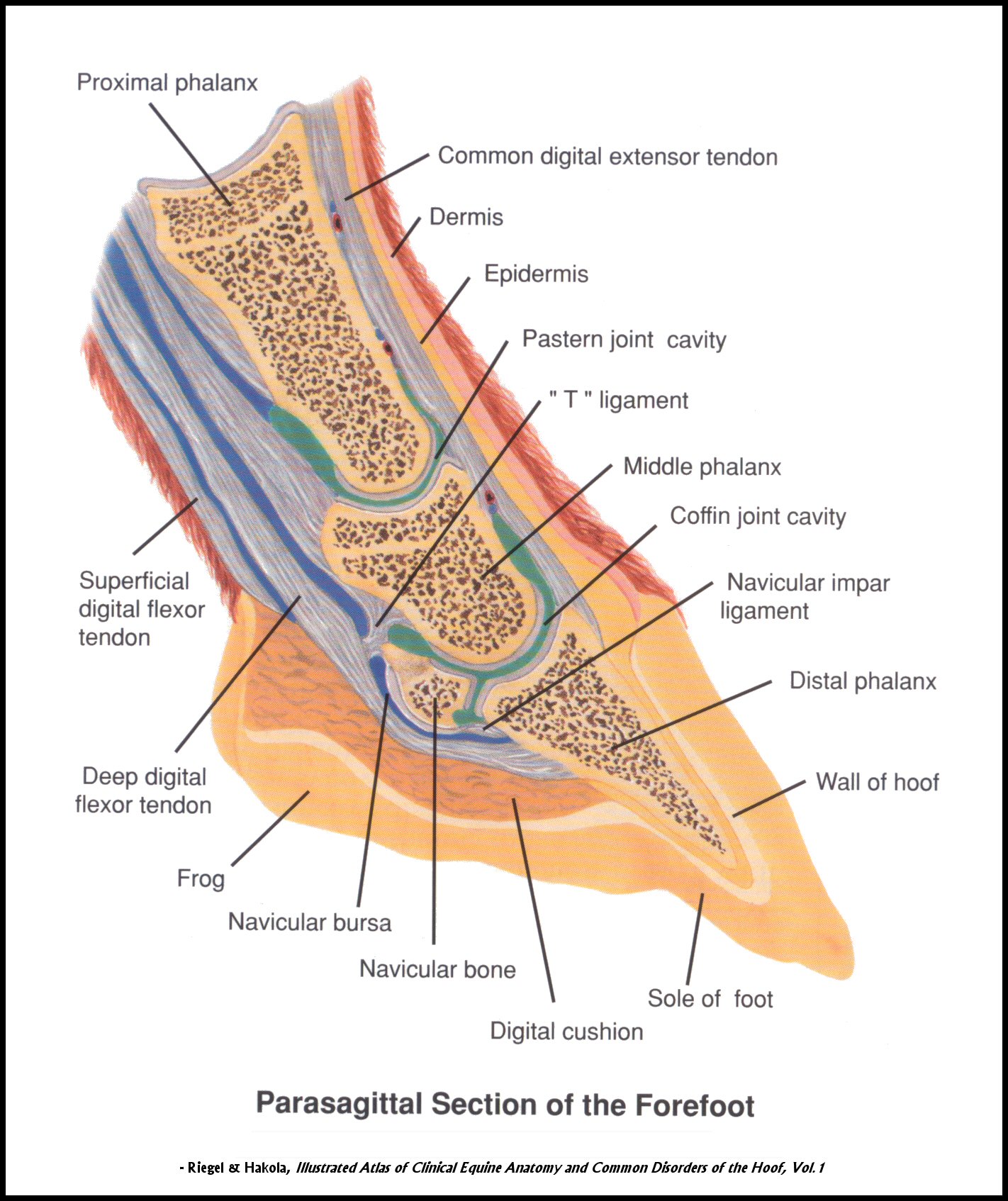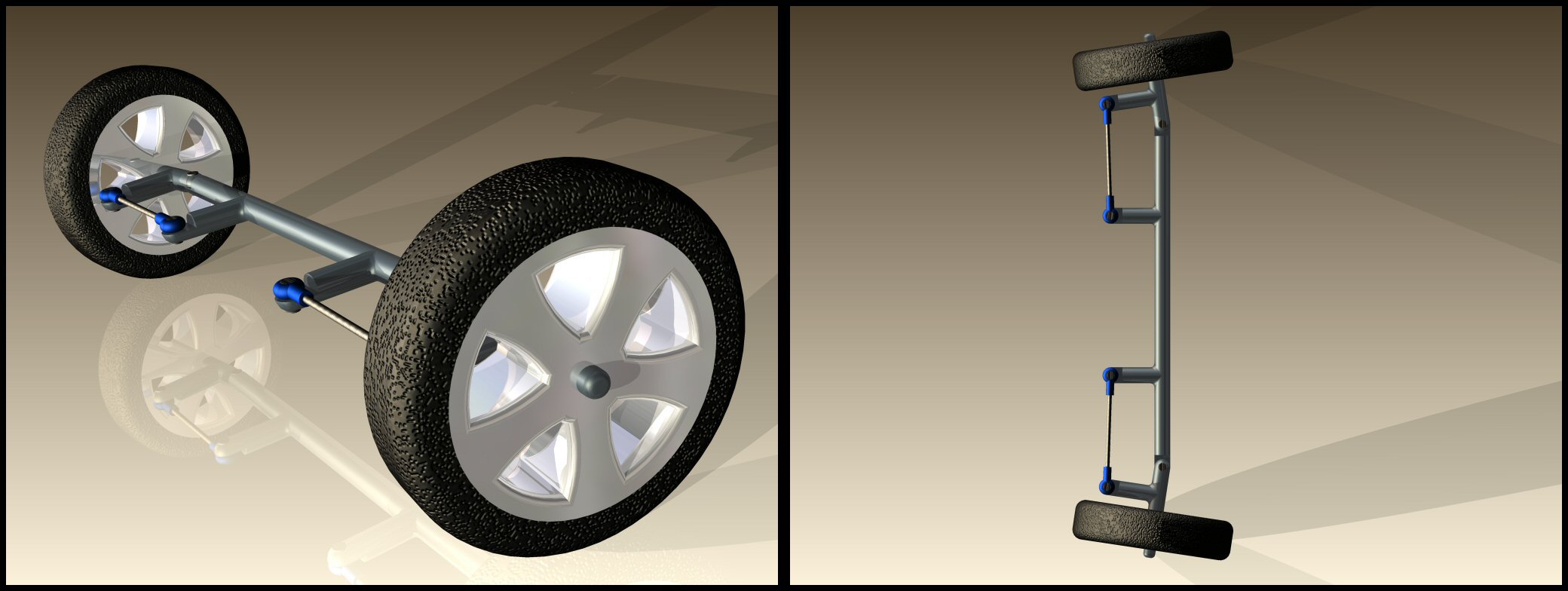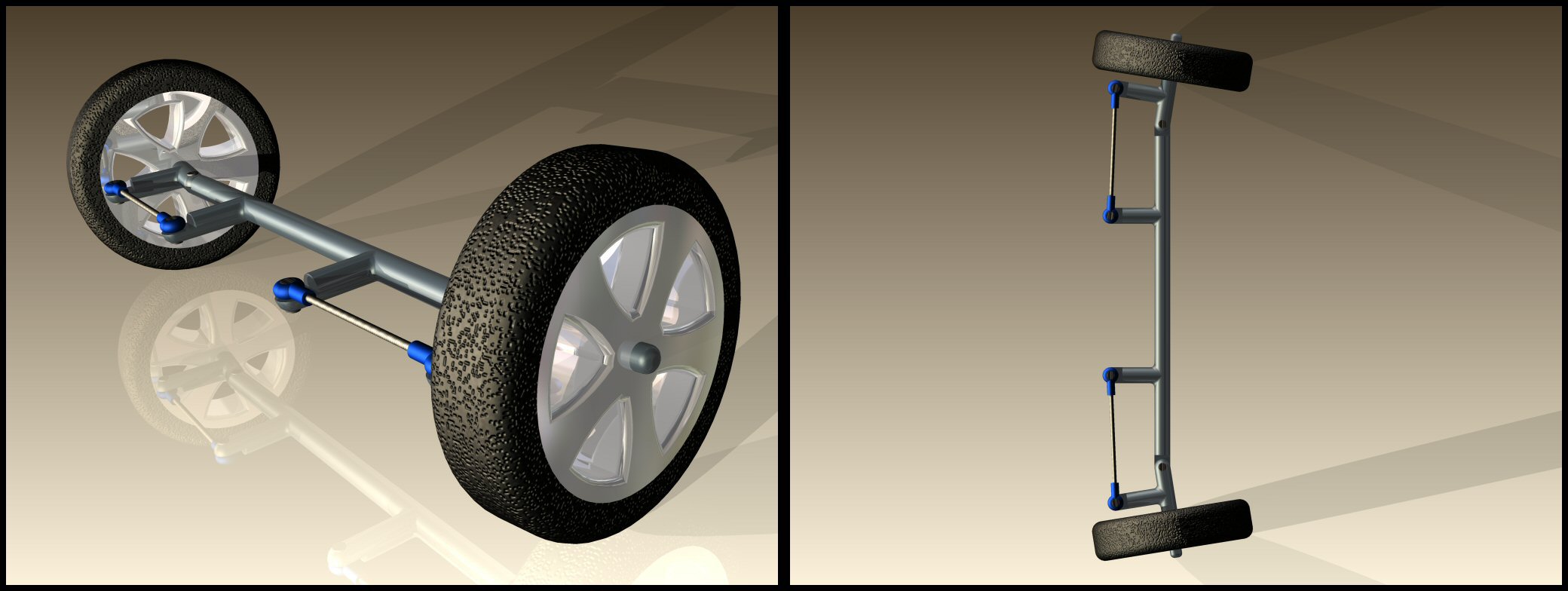In Hoof Angles – Part 1 we touched on the basic parameters of movement that veterinarians and farriers attempt to alter through trimming and shoeing. In this installment, we’ll examine a fundamental misconception about cause and effect as it relates to equine anatomy: the notion that the shape of the hoof causes the horse to move in a particular way. This idea, in fact, is so basic and so prevalent that it impacts nearly every aspect of traditional hoof care. And this applies not only to deliberate manipulation of front-to-back balance i.e. hoof angles, but to side-to-side balance as well. Just look at any book on horseshoeing or so-called “corrective” farriery for detailed procedures on straightening crooked limbs and altering movement patterns through trimming and shoeing. Page through a horseshoe catalog and you’ll see dozens of shoe styles that reflect this belief: wedge shoes, shoes with long branches (“trailers”), shoes with beveled or rounded toes, asymmetrical shoes, shoes for specific breeds…the list goes on and on. For example, look at this pair of photos from Bud Beaston’s The Master Farrier –
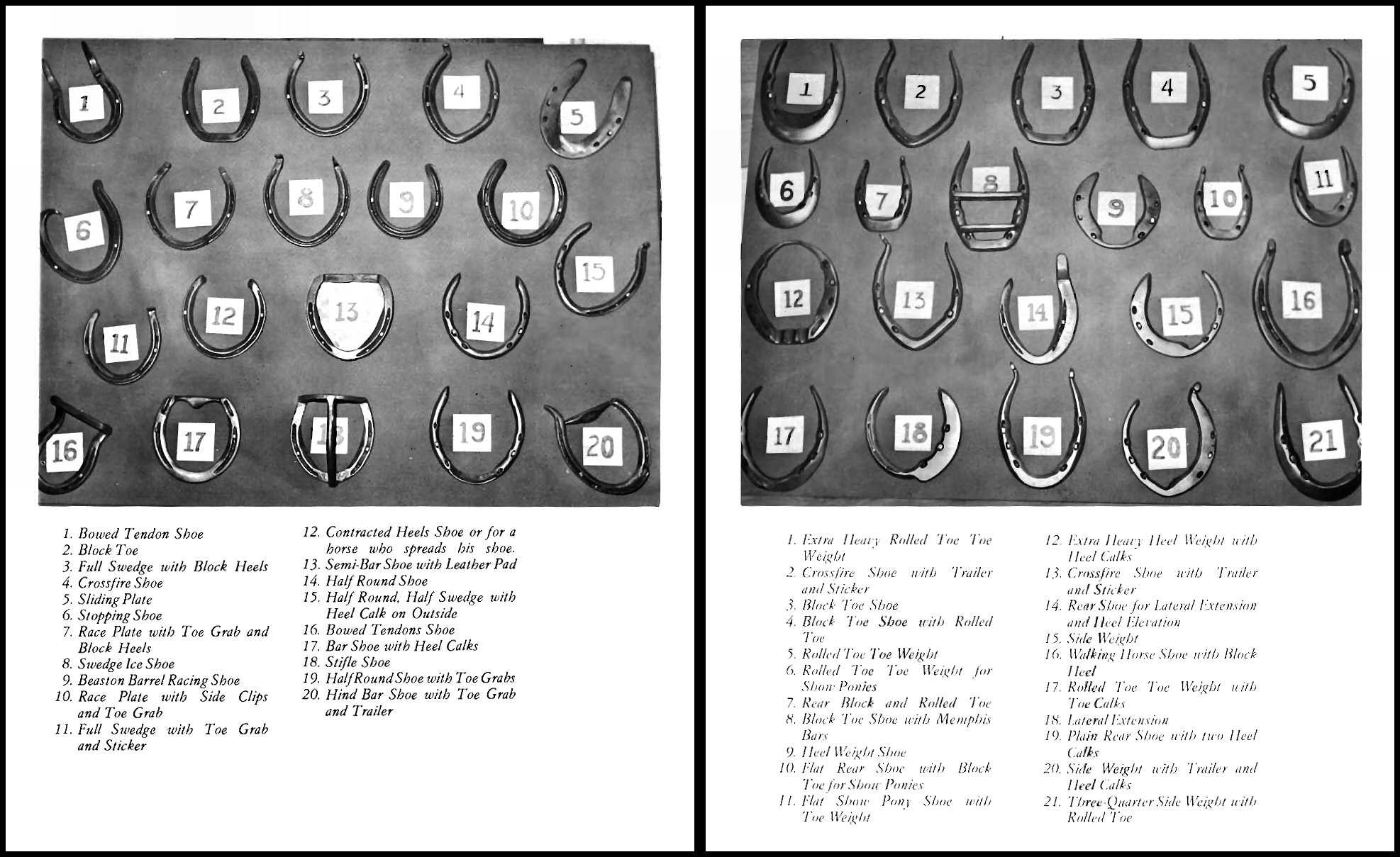 These shoes are custom made with the intent of addressing specific movement issues. The ones on the left are for American Quarter Horses, and the ones on the right are for American Saddlebreds.
These shoes are custom made with the intent of addressing specific movement issues. The ones on the left are for American Quarter Horses, and the ones on the right are for American Saddlebreds.
As I stated earlier, the underlying premise for all of this is that movement can be positively influenced by what happens on the bottom of the hoof. But the reality is this: hoof form is the consequence of how the horse moves, not the cause – at least not in any positive way. Let’s examine why, using a simple but easily-understood example: the construction of the front axle for my new car –
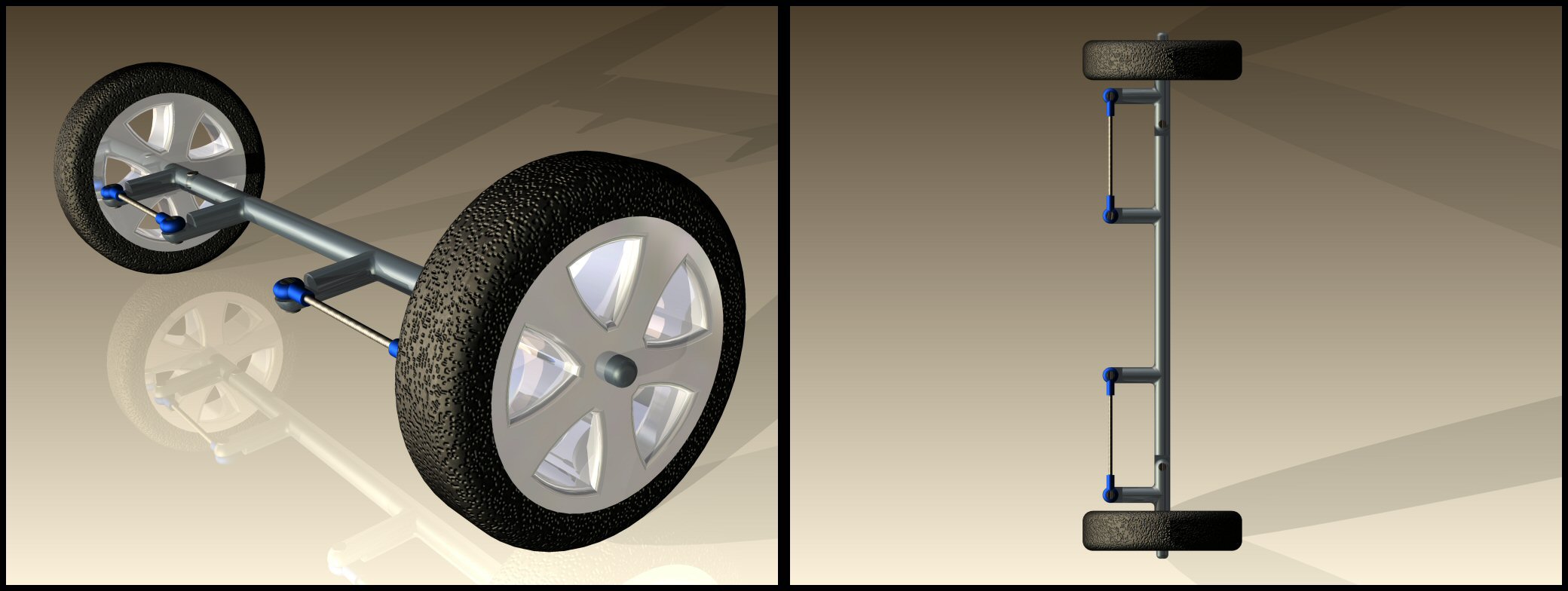 Yes, I realize this isn’t a perfect analogy, since a horse’s limb motion is reciprocating while wheels are rotary. But it’s actually closer than you might initially think because the objective of both situations is the same: efficient horizontal movement. To quote Dr. James Rooney in Biomechanics of Lameness in Horses –
Yes, I realize this isn’t a perfect analogy, since a horse’s limb motion is reciprocating while wheels are rotary. But it’s actually closer than you might initially think because the objective of both situations is the same: efficient horizontal movement. To quote Dr. James Rooney in Biomechanics of Lameness in Horses –
For efficient locomotion, vertical movement (lifting the body against the force of gravity) should be reduced to a minimum in favor of straight-line, forward movement….Since the vertical movement of one leg is nearly balanced by the vertical movement of the next leg in the gait sequence (down and up, respectively), the net effect approaches pure horizontal motion.
And that, after all, is the goal. Just like my car, we want the horse to move forward with minimal resistance (maximum efficiency), and anything that impedes motion detracts from the objective. For example, suppose my tires have an extra lump of rubber on them –
 For a while, at least, I’m going to have a bumpy ride! The lump on the tire causes resistance to horizontal motion because it forces the car to literally lift itself (vertically) as it goes over the lump. But because the rubber is softer than the road, the abrasiveness of the road will eventually wear off the lump and the tire will be round. The movement of the car causes the shape of the tire, not the other way around!
For a while, at least, I’m going to have a bumpy ride! The lump on the tire causes resistance to horizontal motion because it forces the car to literally lift itself (vertically) as it goes over the lump. But because the rubber is softer than the road, the abrasiveness of the road will eventually wear off the lump and the tire will be round. The movement of the car causes the shape of the tire, not the other way around!
A horse’s hoof is exactly the same. Anything on the hoof that prevents efficient movement creates extra work for the horse to overcome. But given sufficient time on abrasive terrain, the barefoot horse will wear off whatever is resisting motion, just like the car’s movement wears the lump off the tire. That, by the way, isn’t the case if the horse is shod, or if I make my tires out of titanium –
 A shod horse is essentially “stuck” with whatever the farrier did, because any chance at self-correction has been defeated by the metal shoe. But the situation is often much worse for horses. Let’s look at another wheel –
A shod horse is essentially “stuck” with whatever the farrier did, because any chance at self-correction has been defeated by the metal shoe. But the situation is often much worse for horses. Let’s look at another wheel –
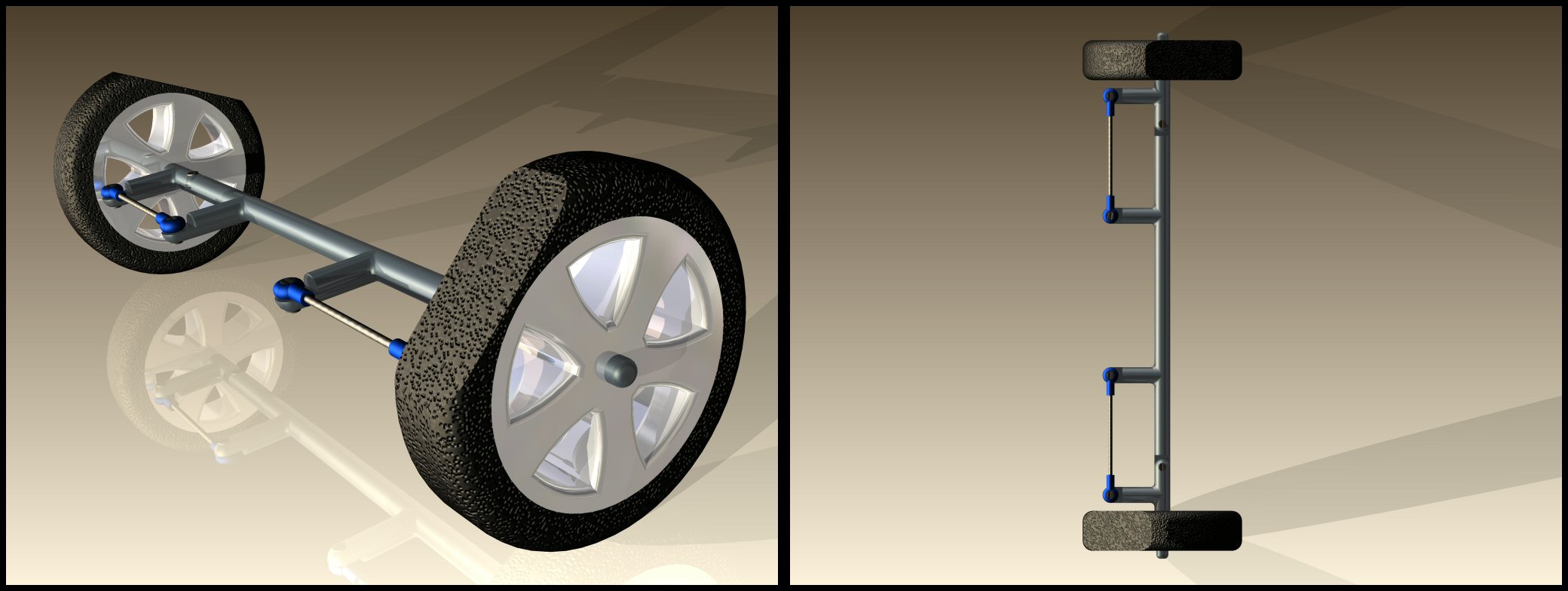 While the lumpy tire certainly makes the ride rough, the lump is fairly small and fairly smooth, so it doesn’t place a lot of additional stress on the axle joints. With this tire, however, there’s quite a bit more stress on the joints as the wheel rolls onto the flattened area. The weight of the car literally “snaps” the wheel down, only to have to work extra hard to lift the weight of the car up again as it rolls past the flattened spot.
While the lumpy tire certainly makes the ride rough, the lump is fairly small and fairly smooth, so it doesn’t place a lot of additional stress on the axle joints. With this tire, however, there’s quite a bit more stress on the joints as the wheel rolls onto the flattened area. The weight of the car literally “snaps” the wheel down, only to have to work extra hard to lift the weight of the car up again as it rolls past the flattened spot.
Many horses endure a similar situation because, I suspect, people think the horse somehow corrects his landing according to what’s been done to the bottom of his foot. But that’s not the case. As I say to clients, “When you wear high heels, do you really think your foot somehow ‘knows’ the heel is longer and corrects the flight arc for a proper landing?” Of course not. In fact, after examining horses in which the extensor, deep flexor, and superficial flexor tendons, as well as their respective check ligaments, had been severed, Dr. Rooney makes the following point about hoof placement –
On the basis of these observations it seems quite clear that alignment and placement of the pastern and hoof can be carried out passively with virtually no active muscular assistance. The contention is not that the muscles are inactive or useless, but rather that their primary function is not production of movement.
In other words, when the structures many believe actively place the hoof at landing are cut, the horse still lands the same way! So the horse is not controlling how he lands; therefore, if one part of the hoof is left long relative to the rest of the hoof, it’s going to make contact with the ground first. And when the horse’s weight comes down on the hoof, it’s going to snap the rest of the foot down. That so-called unilateral concussion and consequent “snapping” motion are extremely destructive to the horse, which we’ll discuss in a later post.
I hope you’re beginning to understand that the forces at work on the hoof are absolutely relentless, constantly at work reshaping it to permit the horse to land and break over with minimal resistance with every step. Just as I can’t change the basic forward motion of the car by changing the tire, the forces shaping the hoof aren’t altered by manipulations at the ground level because motion doesn’t originate at the ground. So anything you do that resists a minimal-impact landing and a minimal-resistance breakover can only be negative; you can’t improve the motion of the horse beyond his conformation, but you certainly can cause long- and short-term damage to joints and soft tissues, depending on the nature, location, and extent of the “resistance” you force upon the horse’s hooves.
As I like to say, a hoof care provider has, in reality, only two choices: he or she can either help the horse achieve that minimal-resistance landing and breakover, which requires an acknowledgement of any shortcomings in the horse’s conformation, or he/she can stand in the way of long- and short-term comfort and soundness by deliberately or inadvertently departing from proper balance.
I choose the former.
Until next time, I’ll leave you with a couple more photos of my car – this time adjusted so the wheels are no longer parallel. Let me know what kind of tires you think will make them parallel again…
